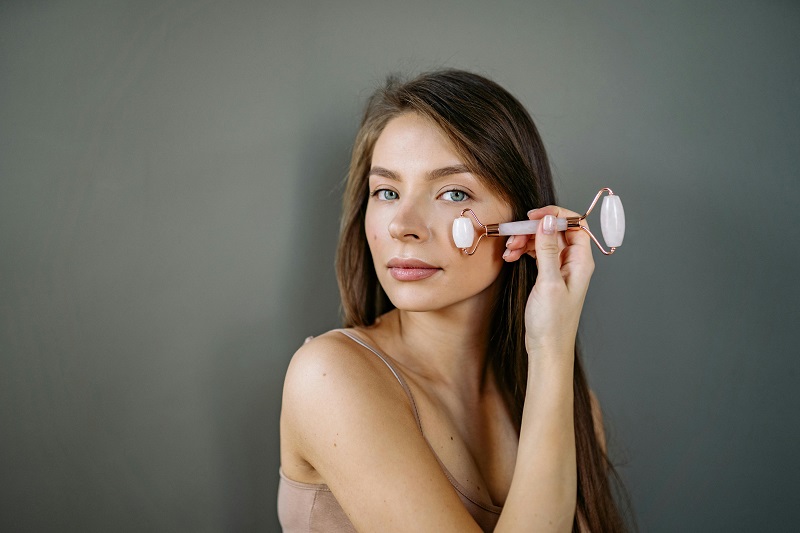Ectoin, chemically identified by its CAS number 96702-03-3, is an exolyte synthesized by exolysable microorganisms that thrive in high-salt and high-temperature environments and has cytoprotective, moisturizing and anti-inflammatory properties. In this blog post, SACH, a highly active cosmetic raw materials exporter, will share the anti-inflammatory effects of ectoin powder for skin, including its biochemical structure, physicochemical properties, and mechanism of action, etc.
1. Biochemical Structure and Physicochemical Properties of Ectoin Powder
Ectoin is a cyclic amino acid derivative with the IUPAC name (S)-2-methyl-1,4,5,6-tetrahydropyrimidine-4-carboxylic acid. Its amphoteric and zwitterionic nature contributes to its unique physicochemical stability. The molecular structure comprises a cyclic ring with a carboxylic acid group and an exocyclic methyl group, conferring both hydrophilic and hydrophobic interactions with biomolecular structures.
This small molecule is remarkably stable under extreme conditions, maintaining protein and membrane integrity through water structuring - a key factor behind its dermatological benefits. Its ability to form highly ordered hydration shells allows ectoin to stabilize proteins and cell membranes without direct binding, contributing to its role as a 'compatible solute'.
2. Anti-Inflammatory Mechanism of Ectoin Powder for Skin
Ectoin’s anti-inflammatory properties are primarily linked to its protective effect on cellular membranes and its ability to reduce oxidative stress - a key upstream driver of inflammation. The compound operates on multiple levels:
2.1. Membrane Stabilization
Ectoin interacts with phospholipid bilayers, enhancing membrane fluidity and integrity. By stabilizing keratinocyte membranes, it prevents the release of inflammatory cytokines that are typically triggered by environmental stressors such as UV radiation, pollution, or allergens.
2.2. Inhibition of Pro-inflammatory Cytokines
Studies have demonstrated that ectoin downregulates the expression of key pro-inflammatory markers such as tumor necrosis factor-alpha (TNF-α), interleukin-6 (IL-6), and interleukin-8 (IL-8). This suppression occurs via modulation of the NF-κB signaling pathway, which is critical in the transcriptional activation of numerous inflammatory mediators.
2.3. ROS Scavenging and Antioxidant Regulation
Reactive oxygen species (ROS) are critical mediators of oxidative stress, which in turn triggers inflammatory cascades. Ectoin indirectly reduces ROS levels by stabilizing cellular structures and possibly by upregulating endogenous antioxidant defenses such as superoxide dismutase (SOD) and catalase.
2.4. Impact on the Inflammasome Pathway
Emerging research suggests that ectoin may interfere with inflammasome assembly - particularly the NLRP3 inflammasome, which plays a key role in chronic inflammatory skin disorders. By preventing inflammasome activation, ectoin reduces the maturation and secretion of IL-1β and IL-18.

3. Clinical Evidence and Dermatological Applications
Ectoin has been clinically evaluated in various dermatological contexts, ranging from atopic dermatitis and psoriasis to rosacea and UV-induced inflammation. Clinical trials and observational studies highlight its efficacy in reducing visible symptoms of inflammation - such as erythema, edema, and pruritus - while improving skin barrier function.
3.1. Atopic Dermatitis and Eczematous Skin
Topical formulations containing 5–7% ectoin have shown significant improvements in patients with atopic dermatitis. Reductions in SCORAD (Scoring Atopic Dermatitis) indices were observed after 2–4 weeks of daily application. The mechanism is attributed to both the restoration of skin barrier integrity and attenuation of the Th2 cytokine milieu.
3.2. Photodermatoses and UV Protection
In controlled studies, ectoin-containing creams significantly reduced UVB-induced erythema and cellular apoptosis. Volunteers exposed to artificial UV radiation showed marked decreases in erythema index when treated with ectoin formulations, suggesting both anti-inflammatory and photoprotective roles.
3.3. Acne and Rosacea
Inflammatory acne and rosacea, both of which are driven by oxidative stress and microbial imbalance, respond favorably to ectoin treatment. Ectoin mitigates the inflammatory response to Cutibacterium acnes and modulates TLR (Toll-like receptor) activation on keratinocytes.
3.4. Wound Healing and Post-Procedure Recovery
Ectoin has been explored in post-laser and microneedling recovery products. Its soothing and anti-inflammatory effects accelerate wound healing and reduce downtime by suppressing inflammatory cytokine production and enhancing re-epithelialization.
4. Molecular Synergy with Other Actives
One of ectoin's strengths lies in its compatibility with other dermatological actives. When combined with niacinamide, panthenol, or hyaluronic acid, ectoin exhibits synergistic effects that enhance overall skin resilience and reduce irritation.
For instance, formulations combining ectoin with ceramides show improved skin hydration and faster recovery in barrier-disrupted models. Similarly, in anti-aging regimens, ectoin paired with retinoids can help buffer the initial inflammatory side effects such as redness and peeling.
5. Safety Profile and Toxicological Considerations
Ectoin is widely recognized for its excellent safety and tolerability profile. Multiple toxicological evaluations, including dermal irritation, sensitization, and phototoxicity studies, have shown it to be non-toxic, non-mutagenic, and non-irritating - even at concentrations exceeding 10%.
In vitro and in vivo studies have confirmed its lack of cytotoxicity to human keratinocytes, fibroblasts, and immune cells. Its biocompatibility makes ectoin an ideal candidate for sensitive skin formulations, pediatric skincare, and post-procedure products.
6. Formulation and Stability Aspects
Ectoin is highly stable under a broad range of pH (4–8) and temperature conditions. It is soluble in water and compatible with emulsions, gels, and serums. Its ability to retain hydration without occlusion makes it particularly suitable for lightweight formulations intended for acne-prone or oily skin types.
Formulators often use ectoin at concentrations between 0.5% and 2%, though therapeutic products for inflammatory conditions may include up to 7%. The addition of stabilizing excipients and antioxidants further enhances its shelf-life and functional performance.
Conclusion
CAS No: 96702-03-3 Ectoin powder provides a comprehensive and well-tolerated solution for reducing skin inflammation through its multifaceted mechanisms of action – from membrane stabilization and reactive oxygen species (ROS) reduction to cytokine modulation and inflammasome inhibition. Its compatibility with other actives and exceptional safety profile make it a versatile ingredient in both therapeutic and cosmetic dermatology.
www.hzsqchem.com
SACH
